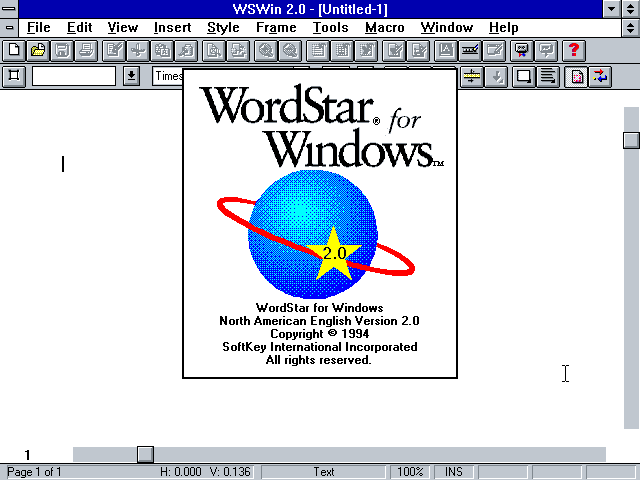
- #Wordstar for linux how to
- #Wordstar for linux install
- #Wordstar for linux drivers
- #Wordstar for linux software
- #Wordstar for linux code
Anyway, if you want something decadent like on-screen help, GNU offers Nano.
#Wordstar for linux how to
Unfortunately, although its developers occasionally discuss how to modernise the " thermonuclear word processor", the changes are too much for the old school to ever consider.
#Wordstar for linux install
It's significantly harder to install than Tilde, and it only does a little to tame the beast that is Richard Stallman's personal project. The effort is called ErgoEmacs, and it's available as a package. The only issue your correspondent has encountered is that it doesn't pick up the text Git auto-inserts on commit, so for that, I use Midnight Commander's mcedit, but it's clunky by comparison.įans of original gangster editors may well mock something that sets out to be easy rather than powerful, but that hasn't stopped one heretic trying to bring the hoary old Emacs editor into the 1990s.
#Wordstar for linux drivers

#Wordstar for linux code

All its apps looked and worked much the same, because in 1987, Apple published a big, detailed book telling programmers exactly how MacOS UIs should work. WordStar, for instance, offered original WordStar, WordStar 2000 and WordStar Express, all with totally different UIs.īut then the Mac came along. This was partly because they all came from different original platforms, partly because such things weren't standardised yet, and partly because once someone had mastered one company's program, it made them very reluctant to switch to anything else. In the bad old days of WordStar, WordPerfect, DisplayWrite, MultiMate, Arnor Protext and so on, every app had a totally different UI. What if you don't edit code and don't need syntax highlighting and all that jazz? What if you just need to occasionally tweak a config file? But what if you don't edit code and don't need syntax highlighting and all that jazz? What if you just need to occasionally tweak a config file? It has even become a badge of pride to be proficient in some of the really complicated ones. It's worth learning some Byzantine editor because it gives you a big advantage editing code. Of course, hardcore Linux types don't see this as a problem. Sad to say, but even supporting WordStar (1978) keystrokes counts as modern and friendly in this world. The problem is that too many of them are weird arcane things from the 1970s, with phenomenal cosmic power, but itty-bitty user interfaces.

#Wordstar for linux software
Opendir my $dir, ".One type of software where the world of Unix-like OSes has a positive embarrassment of riches is text editors. You ask your office co-worker who knows Perl to modify the script to You want to automate the process ofĬonverting lots of WordStar files. Microsoft Word, or practically any modern program.īut you have to modify the file names inside the script ( in.ws and Out.txt in ordinary plain text format, which you can read into NotePad, Greek-like characters to ordinary text, and writes out a new file, The program reads the WordStar file named in.ws, converts the You install Perl on your computer and you try out the script. The program simply resets the high-order bit of allĬharacters in the file, changing the goofy characters into normal ones.] Word by setting the high-order bit of the binary character [Optional geek explanation: WordStar encodes the last character of each This canīe done simply in most programming or scripting languages here's a High-bit characters, but if you need to deal with such files without aĬonversion utility, it's helpful to change high-bit characters to theirĬorresponding 7-bit characters in order to have standard ASCII.

Some other programs have special "WordStar import" features which handle This means that many original manuscripts Notorious conservatism regarding tools used for their writing, some are Many professional writers used it in that era, and given their Word processors (particularly WordPerfect). Was extremely popular in the early 1980s before losing ground to other WordStar was a word processor originally released in 1978 which


 0 kommentar(er)
0 kommentar(er)
